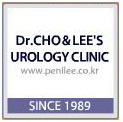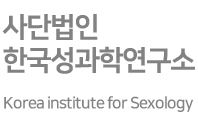성의학
글 수 140
여성 성기능 장애의 분류
CLASSIFICATION OF FEMALE SEXUAL DYSFUNCTION
1999 Consensus Classification System in AUA
I. Sexual desire disorders:
성적인 욕구와 관련된 질환군으로 크게 성교욕구의 저하와 성교 자체에 대한 거부로 나뉘며 정신적 스트레스와 신체적 질환 및 남성호르몬의 저하 같은 원인들에 의하여 일어난다.
A. Hypoactive sexual desire disorder( 성교욕구 저하증 )
In hypoactive sexual desire disorder, the persistent or recurring deficiency (or absence) of sexual fantasies or thoughts and the lack of receptivity to sexual activity cause personal distress. Hypoactive sexual desire disorder may result from psychologic/emotional factors or may be secondary to physiologic problems, such as hormone deficiencies and medical or surgical interventions. Any disruption of the female hormonal milieu caused by natural menopause, surgically or medically induced menopause, or endocrine disorders can result in inhibited sexual desire.
B. Sexual aversion disorder (성교 혐오증)
In sexual aversion disorder, the persistent or recurring deficiency (or absence) of sexual fantasies or thoughts and the lack of receptivity to sexual activity cause personal distress. Sexual aversion disorder generally is a psychologically or emotionally based problem that can result for a variety of reasons, such as physical or sexual abuse or childhood trauma
II. Sexual arousal disorder(흥분장애)
지속적이고 반복적인 성적흥분의 장애 적절한 윤활액의 분비장애 및 주관적흥분과 기타 성적 반응이 나타나지 않는 경우
In sexual arousal disorder, the persistent or recurring inability to attain or maintain adequate sexual excitement causes personal distress. It may be experienced as lack of ective excitement or lack of genital (lubrication and swelling) or other somatic responses.
Disorders of arousal include, but are not limited to, the lack of, or diminished, vaginal rication, decreased clitoral and labial sensation, ecreased clitoral and labial engorgement, and the lack of vaginal smooth muscle relaxation. These onditions may occur secondary to psychologic factors; however, often, there is a medical/physiologic basis, such as diminished vaginal or clitoral blood flow, prior pelvic trauma, pelvic surgery, or medications.
III. Orgasmic disorder (극치감 장애)
orgasmic disorder, the persistent or recurrent difficulty, delay, or absence of attaining orgasm following sufficient sexual stimulation and arousal causes personal distress. This disorder may be a primary (never achieved orgasm) or secondary condition as a result of surgery, trauma, or hormone deficiencies. Primary anorgasmia can be secondary to emotional trauma or sexual abuse. Medical and physical factors and medications (i.e., serotonin reuptake inhibitors, SSRIs) can contribute to or exacerbate the problem.
IV. Sexual pain disorders:
A. Dyspareunia
Dyspareunia is defined as recurrent or persistent genital pain associated with sexual intercourse. Dyspareunia can develop secondary to medical problems such as vestibulitis, vaginal atrophy, or vaginal infection. It can be physiologically or psychologically based, or a combination of the two
B. Vaginismus
Vaginismus is defined as recurrent or persistent involuntary spasms of the musculature of the outer third of the vagina that interfere with vaginal penetration and that cause personal distress. Vaginismus usually develops as a conditioned response to painful penetration, or secondary to psychologic/emotional factors.
C. Other sexual pain disorders
Recurrent or persistent genital pain may be induced by noncoital sexual stimulation. This disorder includes anatomic and inflammatory conditions, including infections (i.e., herpes symplex virus), vestibulitis, prior genital mutilation or trauma, and endometriosis.
여성 성기능에서의 남성호르몬의 역할
Low testosterone levels (total testosterone levels less than 20 pg/dL and free testosterone less than 0.9 pg/dL) also are associated with a decline in sexual arousal, genital sensation, libido, and orgasm. Low testosterone levels can be accompanied by loss of pubic hair, vaginal mucosal thinning, and an overall diminished sense of well-being.[6] [31] Therapeutic success with testosterone for inhibited desire in naturally menopausal women has been reported using a testosterone pellet.[26] Testosterone also improves sexual desire in women who are postmenopausal secondary to oophorectomy.[21] Currently, there are no Food and Drug Administration approved testosterone preparations for women; however, clinical studies are underway to assess the potential benefits of testosterone for the treatment of hypoactive sexual desire disorder and other sexual function complaints. Therapeutic success with testosterone creams for inhibited desire and improvement of sexual interest in menopausal women treated with combinations of estrogen and testosterone have been reported.[21]
All androgens carry the risk for inducing virilization in women. Early reversible manifestations include acne, hirsutism, and menstrual irregularities. Long-term side effects, such as male pattern baldness, worsening of the hirsutism, voice changes, and hypertrophy of the clitoris, are largely irreversible.[6] Evidence suggests that testosterone supplementation decreases high-density lipoprotein (HDL) levels and increases triglyceride levels, increasing risk in women with history of hypercholesterolemia and cardiac disease. Women with a history of breast cancer should not be prescribed testosterone owing to the fact that it can be converted to estrogen.
CLASSIFICATION OF FEMALE SEXUAL DYSFUNCTION
1999 Consensus Classification System in AUA
I. Sexual desire disorders:
성적인 욕구와 관련된 질환군으로 크게 성교욕구의 저하와 성교 자체에 대한 거부로 나뉘며 정신적 스트레스와 신체적 질환 및 남성호르몬의 저하 같은 원인들에 의하여 일어난다.
A. Hypoactive sexual desire disorder( 성교욕구 저하증 )
In hypoactive sexual desire disorder, the persistent or recurring deficiency (or absence) of sexual fantasies or thoughts and the lack of receptivity to sexual activity cause personal distress. Hypoactive sexual desire disorder may result from psychologic/emotional factors or may be secondary to physiologic problems, such as hormone deficiencies and medical or surgical interventions. Any disruption of the female hormonal milieu caused by natural menopause, surgically or medically induced menopause, or endocrine disorders can result in inhibited sexual desire.
B. Sexual aversion disorder (성교 혐오증)
In sexual aversion disorder, the persistent or recurring deficiency (or absence) of sexual fantasies or thoughts and the lack of receptivity to sexual activity cause personal distress. Sexual aversion disorder generally is a psychologically or emotionally based problem that can result for a variety of reasons, such as physical or sexual abuse or childhood trauma
II. Sexual arousal disorder(흥분장애)
지속적이고 반복적인 성적흥분의 장애 적절한 윤활액의 분비장애 및 주관적흥분과 기타 성적 반응이 나타나지 않는 경우
In sexual arousal disorder, the persistent or recurring inability to attain or maintain adequate sexual excitement causes personal distress. It may be experienced as lack of ective excitement or lack of genital (lubrication and swelling) or other somatic responses.
Disorders of arousal include, but are not limited to, the lack of, or diminished, vaginal rication, decreased clitoral and labial sensation, ecreased clitoral and labial engorgement, and the lack of vaginal smooth muscle relaxation. These onditions may occur secondary to psychologic factors; however, often, there is a medical/physiologic basis, such as diminished vaginal or clitoral blood flow, prior pelvic trauma, pelvic surgery, or medications.
III. Orgasmic disorder (극치감 장애)
orgasmic disorder, the persistent or recurrent difficulty, delay, or absence of attaining orgasm following sufficient sexual stimulation and arousal causes personal distress. This disorder may be a primary (never achieved orgasm) or secondary condition as a result of surgery, trauma, or hormone deficiencies. Primary anorgasmia can be secondary to emotional trauma or sexual abuse. Medical and physical factors and medications (i.e., serotonin reuptake inhibitors, SSRIs) can contribute to or exacerbate the problem.
IV. Sexual pain disorders:
A. Dyspareunia
Dyspareunia is defined as recurrent or persistent genital pain associated with sexual intercourse. Dyspareunia can develop secondary to medical problems such as vestibulitis, vaginal atrophy, or vaginal infection. It can be physiologically or psychologically based, or a combination of the two
B. Vaginismus
Vaginismus is defined as recurrent or persistent involuntary spasms of the musculature of the outer third of the vagina that interfere with vaginal penetration and that cause personal distress. Vaginismus usually develops as a conditioned response to painful penetration, or secondary to psychologic/emotional factors.
C. Other sexual pain disorders
Recurrent or persistent genital pain may be induced by noncoital sexual stimulation. This disorder includes anatomic and inflammatory conditions, including infections (i.e., herpes symplex virus), vestibulitis, prior genital mutilation or trauma, and endometriosis.
여성 성기능에서의 남성호르몬의 역할
Low testosterone levels (total testosterone levels less than 20 pg/dL and free testosterone less than 0.9 pg/dL) also are associated with a decline in sexual arousal, genital sensation, libido, and orgasm. Low testosterone levels can be accompanied by loss of pubic hair, vaginal mucosal thinning, and an overall diminished sense of well-being.[6] [31] Therapeutic success with testosterone for inhibited desire in naturally menopausal women has been reported using a testosterone pellet.[26] Testosterone also improves sexual desire in women who are postmenopausal secondary to oophorectomy.[21] Currently, there are no Food and Drug Administration approved testosterone preparations for women; however, clinical studies are underway to assess the potential benefits of testosterone for the treatment of hypoactive sexual desire disorder and other sexual function complaints. Therapeutic success with testosterone creams for inhibited desire and improvement of sexual interest in menopausal women treated with combinations of estrogen and testosterone have been reported.[21]
All androgens carry the risk for inducing virilization in women. Early reversible manifestations include acne, hirsutism, and menstrual irregularities. Long-term side effects, such as male pattern baldness, worsening of the hirsutism, voice changes, and hypertrophy of the clitoris, are largely irreversible.[6] Evidence suggests that testosterone supplementation decreases high-density lipoprotein (HDL) levels and increases triglyceride levels, increasing risk in women with history of hypercholesterolemia and cardiac disease. Women with a history of breast cancer should not be prescribed testosterone owing to the fact that it can be converted to estrogen.





